How to make mayonnaise in less than 10 minutes! Using whole eggs instead of just the yolk, makes this homemade mayonnaise recipe practically fail-proof and extra easy.
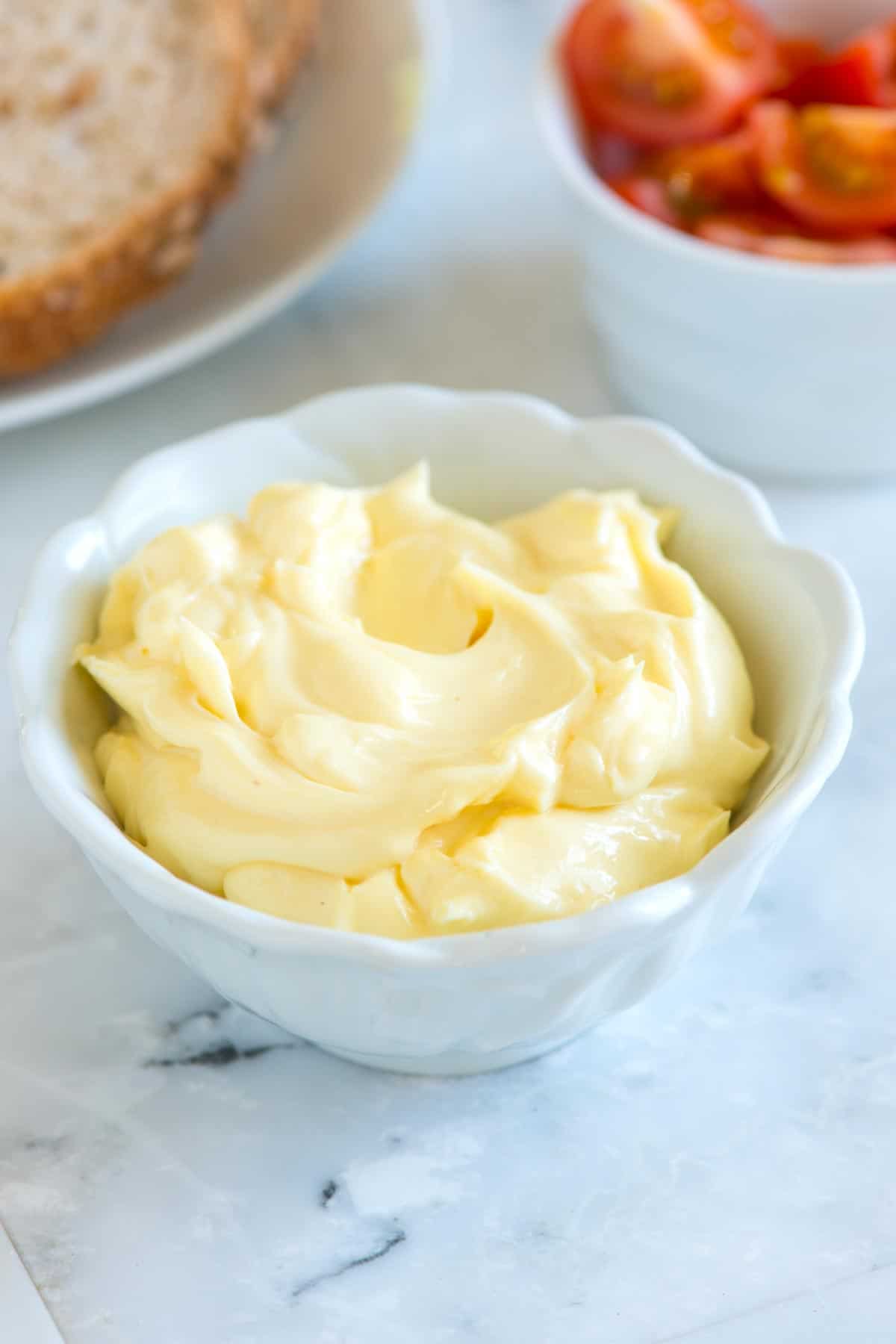
I’ve used this mayonnaise recipe more times than I can count. If you’ve never tried homemade mayonnaise, you are in for a treat. Homemade mayo is ultra creamy and much more flavorful than anything you can buy at the store. This recipe calls for a simple list of ingredients and takes less than 10 minutes to make!
Homemade mayo lasts about two weeks in the fridge, but in all honesty, once I have a batch in my fridge, it usually goes quicker than that. I love using it to make spicy mayo, or sandwiches like egg salad or chicken salad, and I find it makes creamy salads like potato salad and shrimp salad extra special.
Key Ingredients
- Egg: You need to use egg to make mayonnaise. We do use raw egg in the recipe. For mayonnaise made without egg, see our vegan mayonnaise recipe. Personally, I don’t have an issue adding raw egg to the recipe, but if you are concerned about eating raw eggs, buy pasteurized eggs. They are sold in the egg section of the grocery store. You can also pasteurize eggs yourself, just search for a tutorial online.
- Mustard: I know that not everyone loves the flavor of mustard, but when it comes to making homemade mayonnaise mustard is sort of a magical ingredient. Mustard adds a bit of flavor, but it also helps to keep the mayonnaise stable. Along with the egg yolk, mustard helps emulsify the mixture, reducing the risk of our mayo breaking. If you aren’t a fan, you can reduce the amount called for in our recipe or leave it out (just remember it is one of the fail-safes we have added to our recipe to encourage an emulsification.)
- Vinegar or lemon juice: Not only does a little acid like wine vinegar, champagne vinegar, and lemon juice add incredible flavor to the mayonnaise, it also helps to stabilize the mixture.
- Neutral flavored oil: By neutral flavored oil, I mean use an oil that is light in flavor. Quite a bit of oil is added to make mayonnaise, so it’s important to like the flavor of the oil you use. I really like safflower oil or sunflower oil for mayonnaise. Vegetable oil or canola oil will work, too. Avocado oil works, but does add a slight flavor and seems to be more finicky. Since posting the recipe, quite a few readers have asked about olive oil in mayonnaise. You can use olive oil, but it can be a little overpowering so I prefer to use a brand that’s light and fruity. I think robust or spicy olive oils would be too much. You might also consider only replacing half of the oil called for in the recipe with olive oil and use something more neutral for the rest.
How to Make Mayonnaise
There are a few ways to make mayonnaise. We use our food processor with the small bowl attachment for the best results, but an immersion blender or making it by hand will also work. I have included a recipe for making mayo using an immersion blender below. For handmade mayo, you’ll need a whisk and a large bowl. Expect tired arms and strong biceps if you do it by hand.
- Prepare your food processor. I prefer to use the small bowl attachment that came with our food processor to make mayonnaise.
- Add an egg to the bowl of your food processor and process for about 20 seconds.
- Add mustard, vinegar, and salt then process for another 20 seconds.
- Slowly add the oil, in tiny drops, until about a quarter of the oil has been added. Adding the oil slowly is really important. If you were to dump it all in at once, you’d have mayonnaise soup!
- Taste the mayonnaise and adjust with additional salt and vinegar or lemon juice.
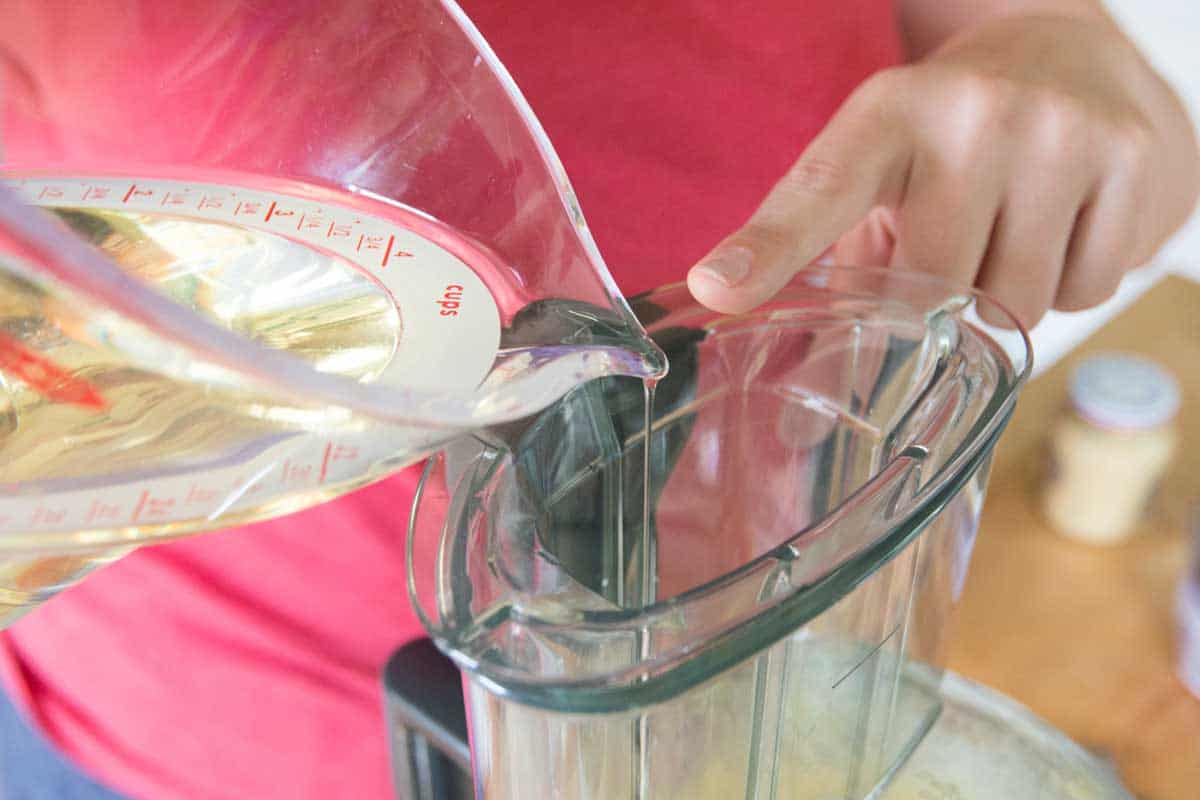
For the best mayonnaise, add the oil slowly very slowly. When the mayonnaise is done, it will be thick and creamy (as shown in the photos).
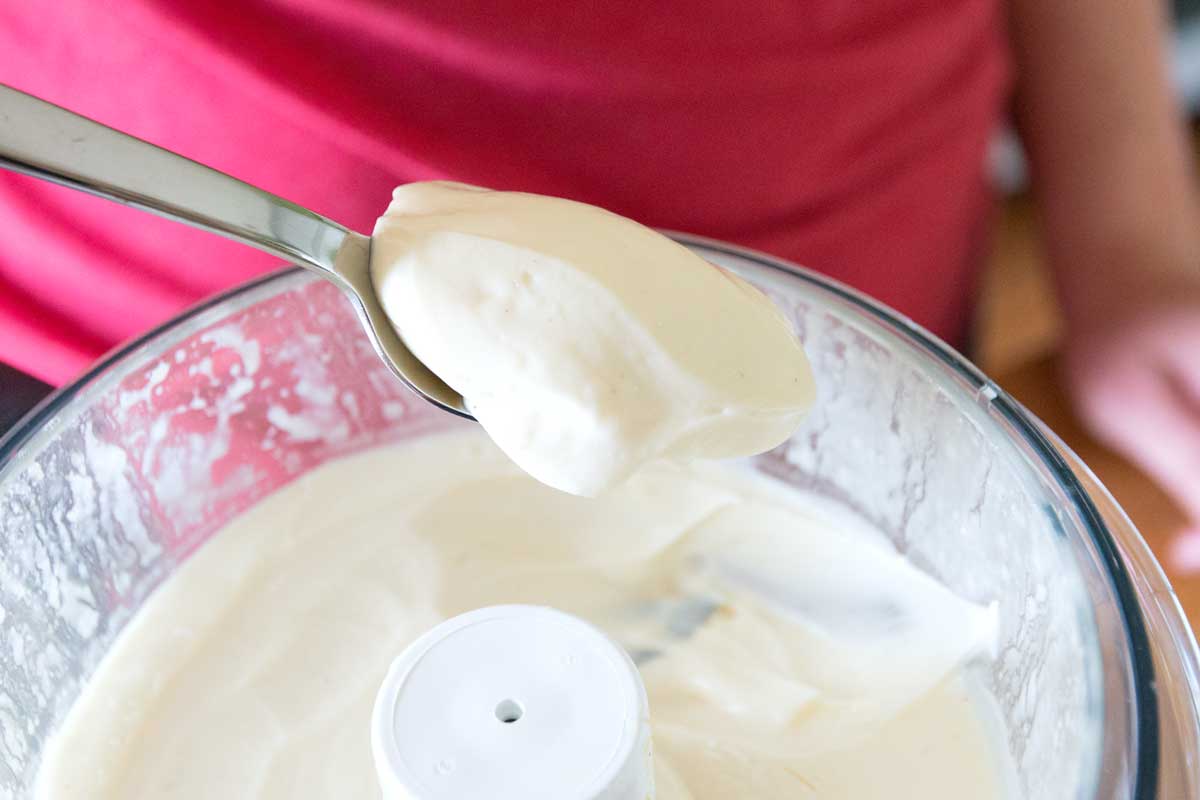
Delicious Ways to Use Homemade Mayonnaise
I love having a batch of this mayo in the fridge. It is absolutely perfect for making our simple egg salad, tuna salad, smashed chickpea salad, or this herby chicken salad, all of which are perfect for make-ahead lunches.
Homemade mayonnaise isn’t just for sandwiches! We love using it to make our potato salad, our creamy coleslaw, macaroni salad, or our broccoli salad. Adam also loves using homemade mayo to make his Maryland-style crab cakes, and I love it when he does!
Finally, you can turn mayo into creamy sauces and salad dressings! Try spicy mayo, this homemade blue cheese dressing, this simple tartar sauce, homemade fry sauce, or my favorite ranch dressing.
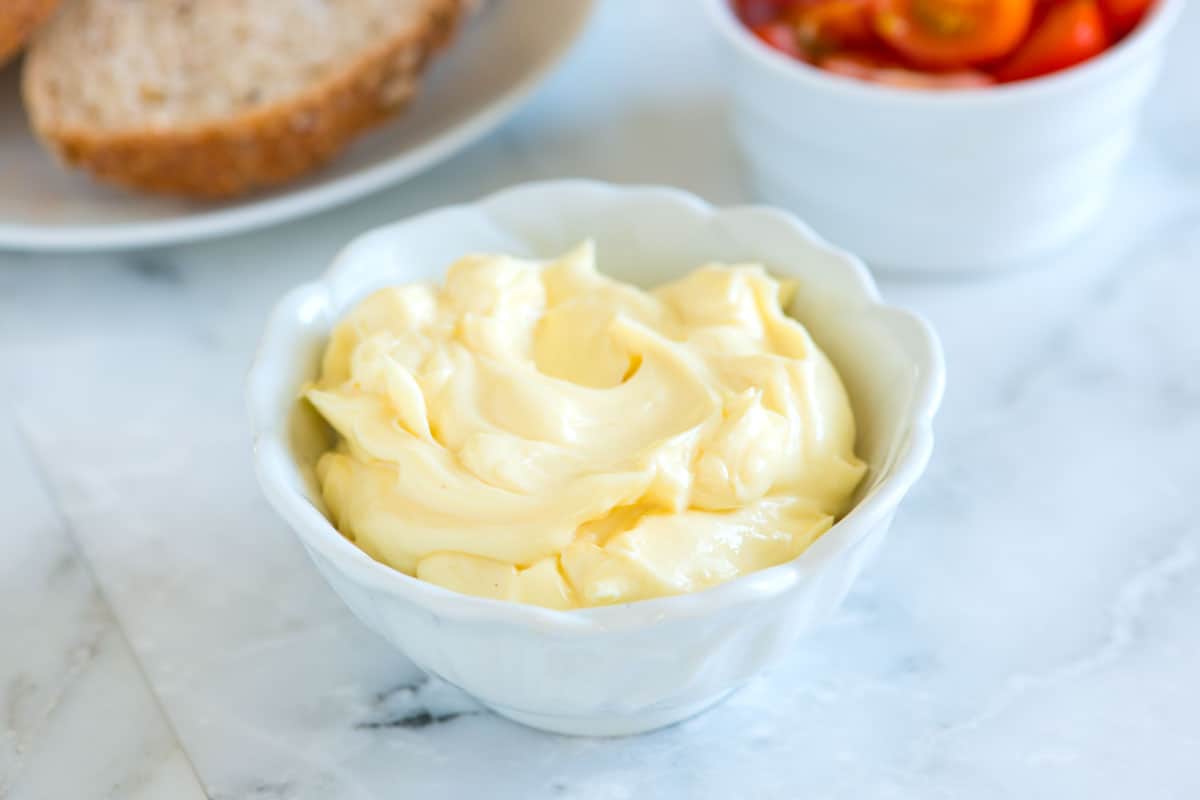
Fail-Proof Homemade Mayonnaise
- PREP
- TOTAL
Homemade mayonnaise is such a treat. It’s very simple to make, too. There are a few ways to make mayonnaise. My preferred methods are using our food processor with the small bowl attachment or an immersion blender with a tall jar. You can use a blender or make it completely by hand, but I don’t find them as fail-proof.
Watch Us Make the Recipe
You Will Need
1 large egg
1 tablespoon Dijon mustard
1 tablespoon red wine vinegar or white wine vinegar
1/4 teaspoon fine sea salt, or more to taste
1 cup (240ml) safflower oil or vegetable oil
1 teaspoon fresh lemon juice, optional
Directions
- Prepare Equipment
1If you have a large food processor, use the smaller bowl attachment that came with your processor so that the bowl is not too large for the amount of mayonnaise this recipe makes. Not using the smaller bowl can prevent the mayonnaise from emulsifying since the mixture will not have enough contact with the blade.
2If you do not have the smaller bowl attachment, I recommend making the mayonnaise with an immersion blender (method is shared below). You can also make a larger batch, double the recipe, and use the standard bowl attachment. I have had plenty of success using this recipe with a high-speed blender, but based on feedback from our readers, we have noticed that more issues pop up when a blender is used.
- Make Mayonnaise
1Add egg to the small bowl of a food processor and process for 20 seconds. Add the mustard, vinegar, and salt. Process for another 20 seconds.
2Scrape the sides and bottom of the bowl, turn the food processor on then begin to slowly add the oil in tiny drops until about a quarter of the oil has been added (this is critical for proper emulsification).
3When you notice that the mixture is beginning to thicken and emulsify, you can be a little less strict. With the processor on, continue to add it slowly, but increase to a very thin stream instead of drops of oil.
4When all of the oil has been added, scrape the bottom and sides of the bowl and process for an extra 10 seconds. Taste mayonnaise for seasoning then add salt, lemon juice or extra vinegar to taste.
5For tips on troubleshooting common mayonnaise problems, including broken emulsions and adjustments for thickness, please see the tips below.
- Immersion Blender Mayo (Alternate Method)
1An immersion blender makes this so quick! Important: Do not use the mini-processor bowl attachment. You need an immersion (stick) blender and a tall, narrow jar.
2Add egg, mustard, vinegar, lemon juice (optional), and salt to a tall, narrow jar. Then, pour all the oil directly over the other ingredients.
3Insert the immersion blender wand, pressing the head firmly against the bottom of the jar so that it fully covers the egg. Turn the blender on high. Keep the blender head pressed to the bottom. Don’t lift it yet! You’ll quickly see a thick, white, creamy mayonnaise begin to form at the very bottom of the jar, creating a stable base (this usually takes about 15 to 30 seconds). This initial formation is crucial as it establishes the stable emulsion that will incorporate the rest of the oil.
4Once you have a thick layer of mayo at the bottom, slowly lift the blender up and down to incorporate the remaining oil until all is thick and creamy. Taste mayonnaise for seasoning then add salt, lemon juice or extra vinegar to taste.
Adam and Joanne's Tips
- Storing Homemade Mayonnaise: Store covered in the refrigerator up to 2 weeks.
- Raw eggs: When choosing eggs for homemade mayonnaise, go for fresh, properly refrigerated, clean pasteurized grade A or AA eggs with intact shells.
- Olive oil: Olive oil can be a little overpowering so use one that’s light and fruity and consider only replacing half of the oil called for in the recipe with olive oil and use something more neutral for the rest.
- Roasted garlic mayonnaise: Add 4 to 5 roasted garlic cloves to the mixture before blending. Here’s how to roast garlic. You might also enjoy our garlic aioli recipe, which is similar to this one but uses egg yolks and raw garlic instead of whole eggs and roasted garlic.
- Flavored mayo: Add fresh herbs, chipotle, Sriracha, or curry powder.
- Fixing Broken Mayonnaise: Transfer your broken mayo to a measuring jug, and thoroughly clean the food processor bowl and blade. Add a fresh egg yolk and 1/2 teaspoon of vinegar or lemon juice to the clean food processor bowl. Turn on to blend, and then very slowly, add the broken mayo, bit by bit, just as you did when you added the oil the first time.
- Mayonnaise is emulsified but too thin: If your mayonnaise has emulsified (it’s creamy and not separated) but is thinner than you’d like, you can try adding a little more oil. With the food processor running, drizzle in a very thin stream of oil until you reach your desired thickness. Be cautious, as adding too much oil can cause it to separate.
- Mayonnaise is too thick: If it is too thick, add a teaspoon or two of cold water to the food processor while it’s running. Add the water gradually, so you don’t make it too thin.
- The nutrition facts provided below are estimates. One serving equals 1 tablespoon.

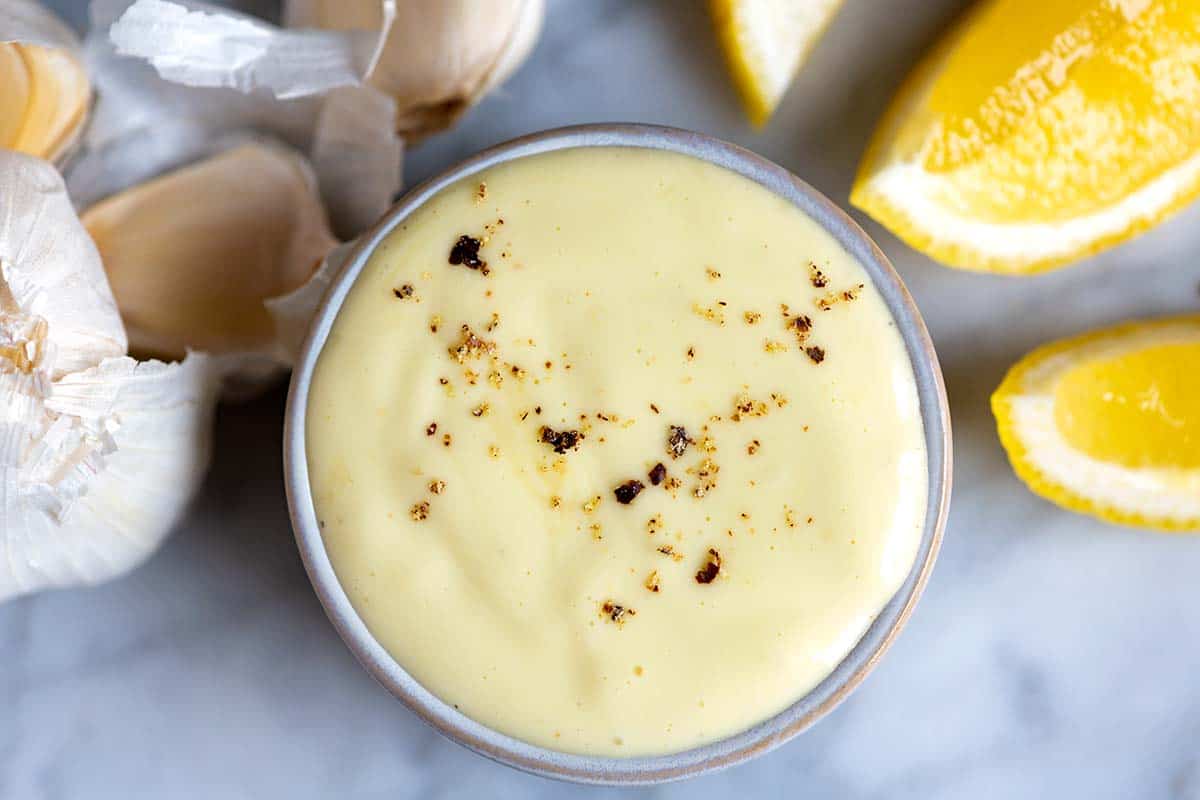
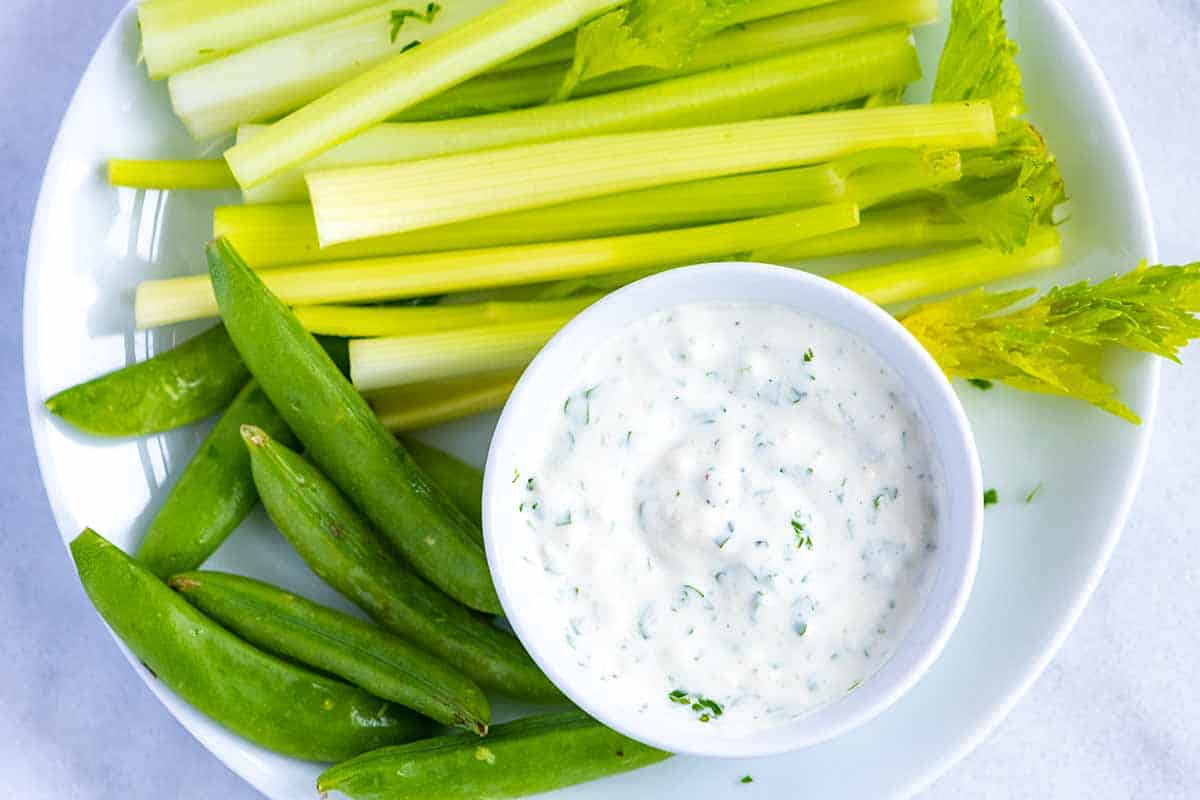
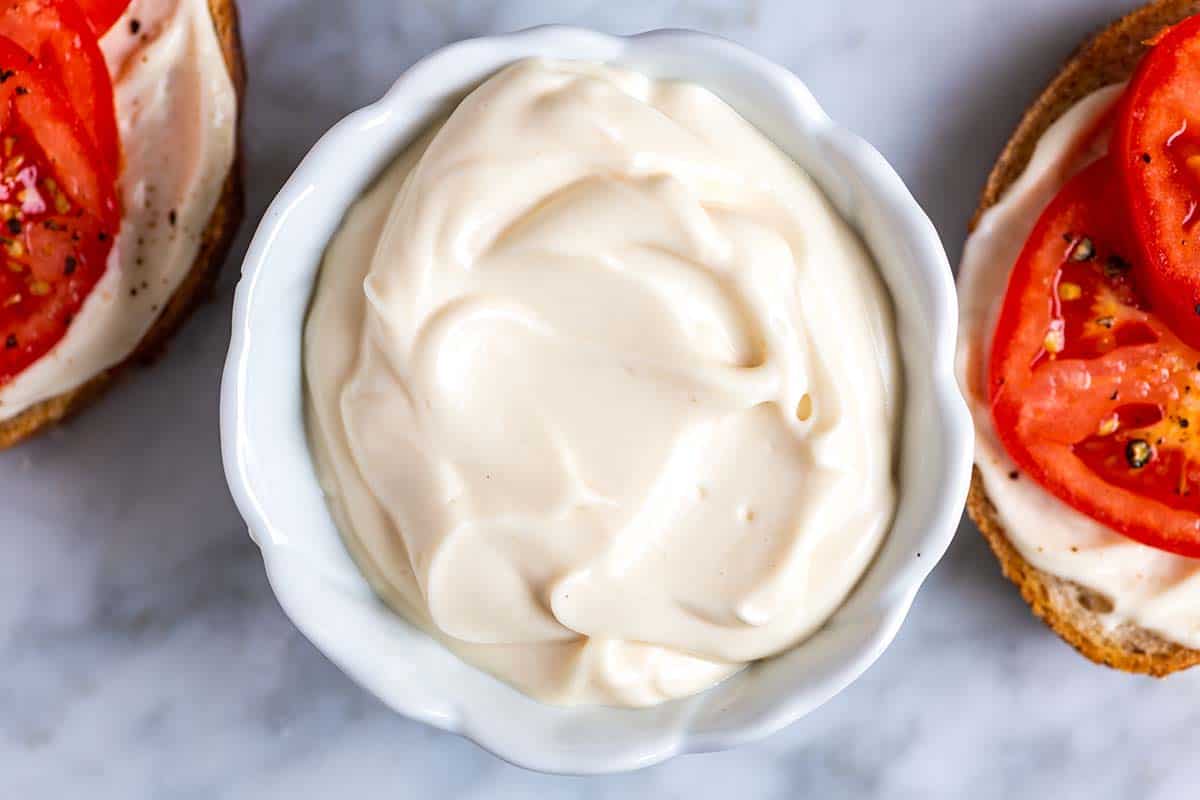
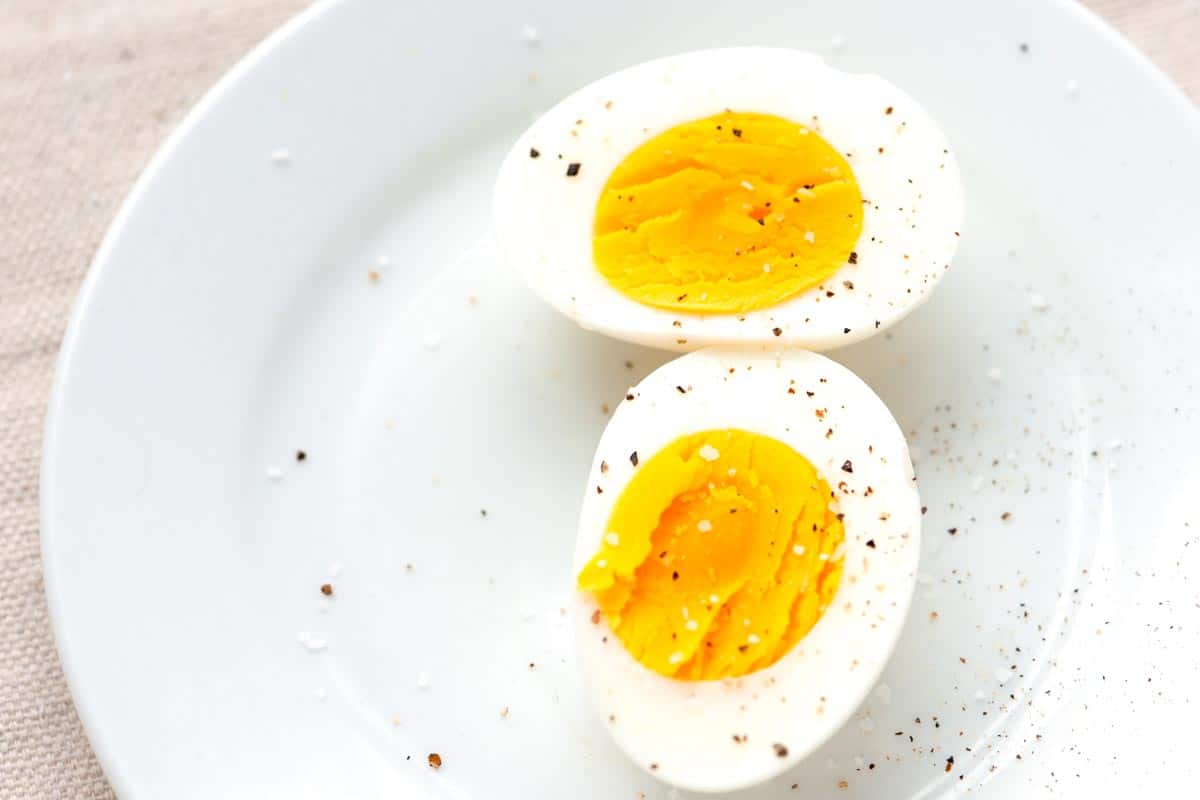
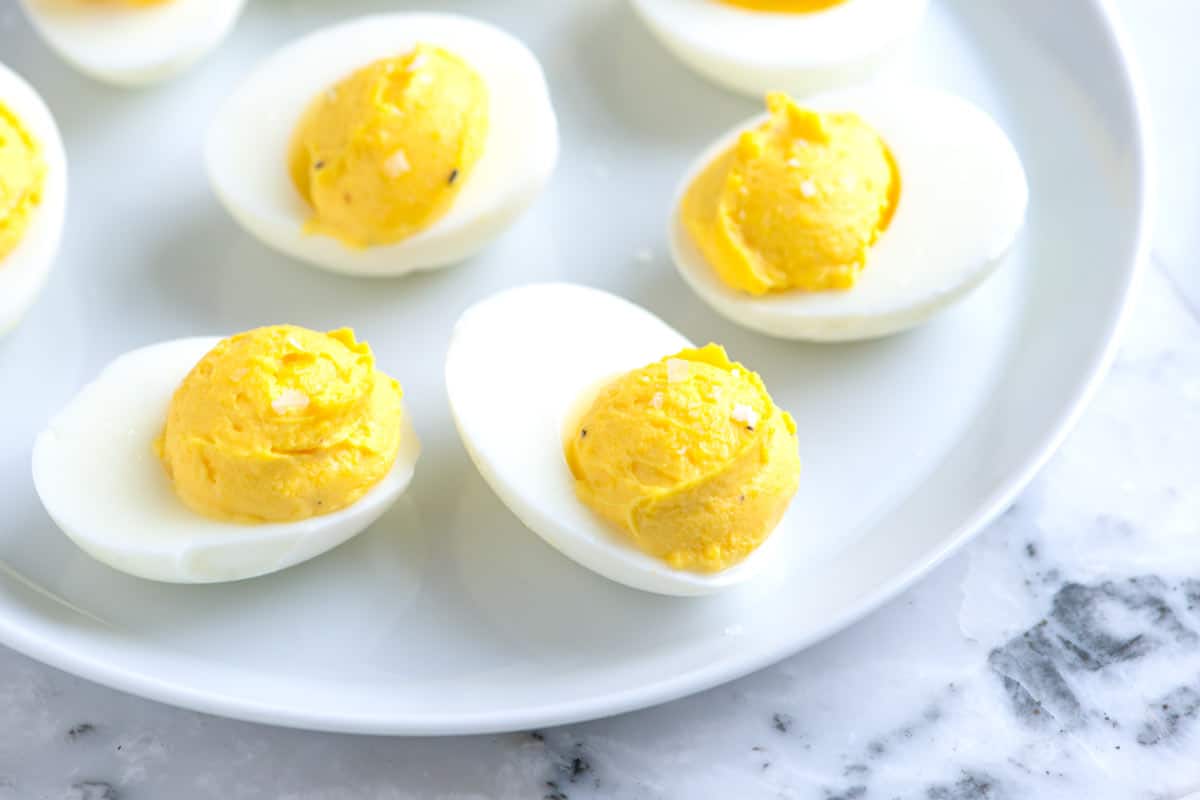
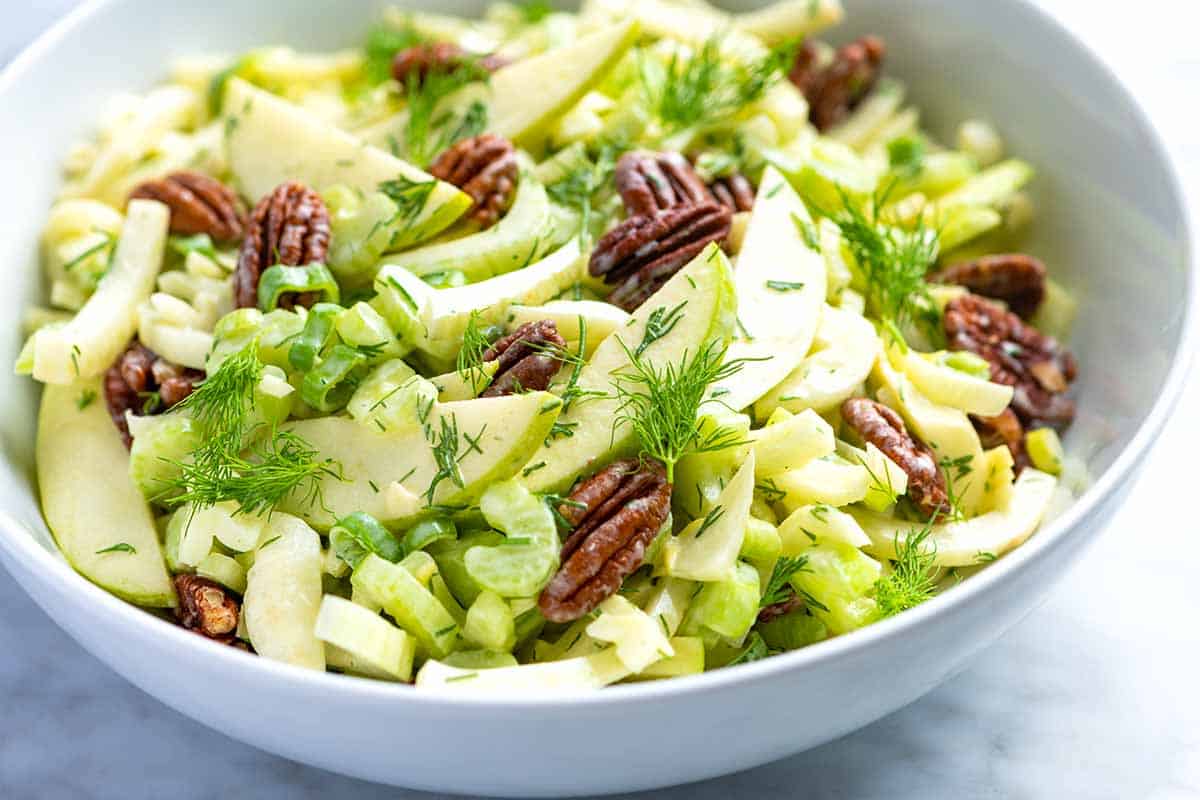


I made this mayonnaise today to serve with chicken & Waldorf salad. I made it using my stick blender and it took only 30 seconds! I used white wine vinegar and English mustard as substitutes and it is THE BEST MAYONNAISE I have ever tasted! Thank you so much for the recipe.
Wow, we are so happy you found us, Sue! Thank you so much for coming back to let us know!
Made this mayo, I added lemon and dill. So good. Looking good forward to make pasta salad with it.
Thank you so much for this fabulous and easy mayo recipe. I’ve made it several times now with no problems at all (I use my blender to do it) and it’s the best one I’ve used by far. I’ll never go back to shop bought mayo. Wanted to make at home as have started reading ingredients on things & not much liking the additives they put in mayo (inc. leading brands) and other foods even though they say it’s all safe for human consumption….. Anyway, thank you!
You are so welcome and we are thrilled you loved your homemade mayo! 🙂
Tastes very bad to me, not mayonaise I would want to eat
OMG this mayo is so delicious
I purchased an immersion blender just so I could make my own truffle mayo and it came out perfect the very first time! I added 1tsp of fine truffle and 1/2 olive 1/2 avocado. Also ACV instead of white. Yum! I immediately made a 2nd batch using 1/2 coconut oil (melted) 1/2 avocado oil and mustard powder with everything else the same. Creamier and waaay lighter in flavor which I prefer. Honestly, your base recipe is so versatile! Next time: chipotle and smoked jalepeno! Woo-hoo! No more grocery store garbage mayo!
I’ve tried so many different versions of homemade mayo and it never seems to work. Generally too soupy. This came out stellar first try which is unuusual for me. My new go-to mayo.
This was so incredibly quick and easy to make I was shocked! Used the immersion blender method as I don’t have a food processor and it came together in seconds! The best part was that all the ingredients are things I have at home, and it tastes so amazing and fresh!
I tried homemade mayonnaise before, I love mayo and am picky about the taste of it, but this is by far the best ever. Thank you for this recipe.
Thanks so much!!!!! Your step by step instructions were very clear and easy to follow.
I made it and it is delicious! Thank you for the recipe!
Thanks for the simple recipe. Due to allergies I need to make a lot of my food from scratch.
You are so welcome! 🙂
SOOO Yummy! I did the immulsion blender method and def had to go up and down a few times (found more success going down then up due to suction) but the consistency is perfect! I did half canola and half olive oil and it tastes great! I did do the vinegar, mustard, and lemon and I’m happy I did 🙂
Wonderful! 🙂
The mayo lovers in my family thought it was delicious. I only used lemon juice (by mistake) and avocado for the oil. I am very pleased knowing it did not have seeds oils and is made with all natural ingredients. It was easy to make, this is my go to mayo recipe!
We are thrilled that you love the recipe! 🙂